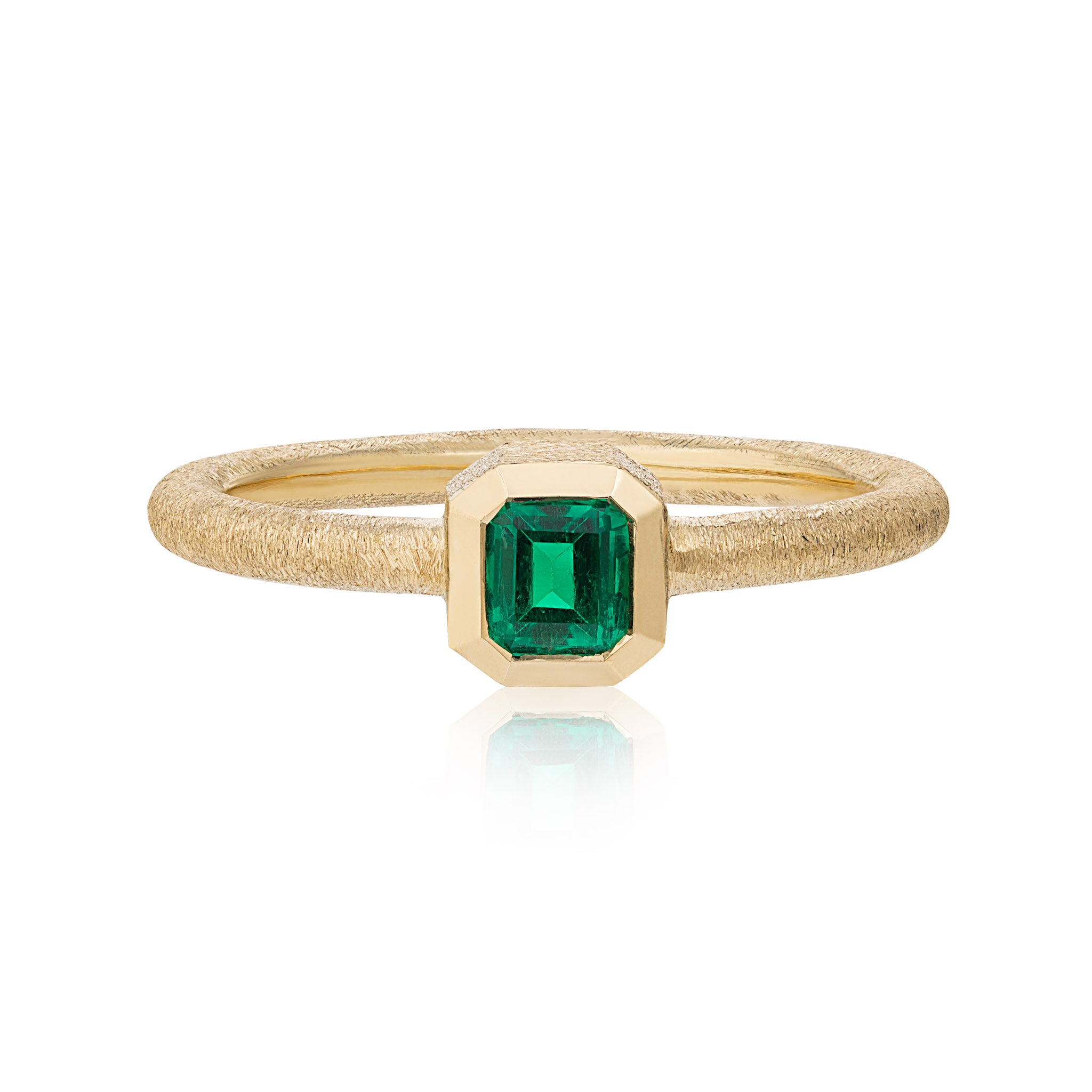December has three birthstones but the main two being turquoise and tanzanite, each of these gemstones carries a unique blue tone and both welcome in new prosperity and a sense of calmness as the year draws to an end.
Tanzanite
A beautiful blue stone a thousand times rarer than a Diamond, the ultimate blue gemstone is the epitome of uniqueness. The gemstone was added to the birthstone lists in 2002 and was the first since 1912, and rightly so, it is an extraordinary gemstone.
Where did tanzanite originate?
A truly special and unique gemstone that was found in 1967, forming over 500 years ago under extreme geological conditions, it is thought to be unique and can only be found in a very small area on the foothills of a particular mountain. That’s be
ing Mount Kilimanjaro in Tanzania comes tanzanite, a gemstone with only a single known source that has become one of the most intriguing and desirable precious gemstones of modern times. The tanzanite gemstone is named after the African state Tanzania, which is also the only place on earth where it is found. The chances of it being discovered anywhere else being less than one in a million, combined with the possibility of Tanzanite becoming extinct shortly, adds to the stone's allure and value.

What does tanzanite represent?
Indigo tanzanite gems are believed to represent heart and intellect combined with intuition and purity. These stones are used as symbols of dignity, truth, judgement and longevity. Some believe that it aids in detoxifying the body and improving vitality. It is said to be a good stone to wear or have near in situations where you need a calming and soothing presence.
It is thought that these associations generate from the ideas the tribe have around the colour blue. The beliefs held about the colour blue are also associated with tanzanite due to the deep blue colour it holds.
Tanzanite Jewellery
Tanzanite named by Tiffany & Co. After the county of its discovery was introduced to the market in 1968, has a rarity and allure that most jewellery lovers seek.
Originally used as a sapphire substitute Tanzanite is now used in all forms of jewellery and looks stunning in a variety of metal types. Placed with Diamonds for their white and bright contrast or other contrasting coloured gemstones creates beautifully elegant and standout pieces of fine jewellery.
Tanzanite can be ‘softer’ than other gemstones, coming in at 6.5 - 7 on the Moh’s scale of gemstone hardness, and so paired with harder stones and you have taken care of the gemstone it will stay gorgeous for a long time to come and can be treasured forever.
Turquoise
It is one of the first-ever gemstones to be mined and has long been prized for its intense and bright blue colour. Turquoise is a widely available stone, however, it is rarely found in its pure, natural form.
Where does turquoise originate?
As water moves through porous rock, minerals are dissolved, such as copper, aluminium and iron. Over a long time, these minerals accumulate in pores and cracks to form deposits of the material we know as turquoise. The colour of the stone varies depending on the amount of iron and copper present.
The name turquoise is said to derive from 'Turkish stone' because the trade route that brought it to Europe came via Turkey. Turquoise was mined by 4000 BC and is used for jewellery and various other things.
What does turquoise represent?
The gemstone has an outstanding history and has been seen in a variety of jewellery
Turquoise is thought to be a protective stone that has been used for amulets for centuries - an amulet is a small piece of jewellery thought to give protection against evil, danger and disease. It is said to dispel negative energy and provide protection against pollutants in the environment. The birthstone of December is also thought to enhance intuition, as well as release inhibitions and prohibitions which allowsallowoul to express itself.
Physically, turquoise is said to be an excellent stone for exhaustion, depression and panic attacks. It is thought to enhance the physical and physic immune systems, regenerate tissue, support the assimilation of nutrients, alleviate pollution and viral infections and heal the whole body.
Turquoise jewellery
As previously said turquoise has an immense history with people in the 13th century, convinced that wearing turquoise would stop them from falling off horses, Native Americans would attach it to their bow to enhance their aim during battle. It was also said that turquoise would warn them of impending doom by breaking at the approach of disaster. Turquoise wasn’t just a piece of jewellery but now can work as any from a small pair of studs to a glamorous necklace.
On Moh’s scale of mineral hardness turquoise grades 5 to 6. This means it can be scratched by another mineral with the same hardness or one that's higher but when looked after this is a stone that can bring good luck and confidence.


 (31)
(31)
